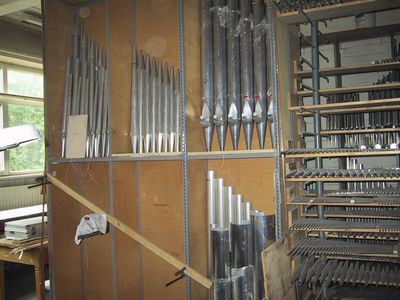Organ pipe making
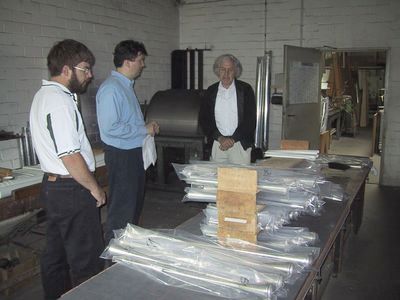 This room is where the sheet metal for the organ pipes is made.
This room is where the sheet metal for the organ pipes is made.
The tin/lead alloy for the pipes is mixed in a furnace, and then poured onto the flat stone slab in the front of this picture to form a sheet of metal. In this picture, there are some pipes stacked on the slab, so its not entirely visible.
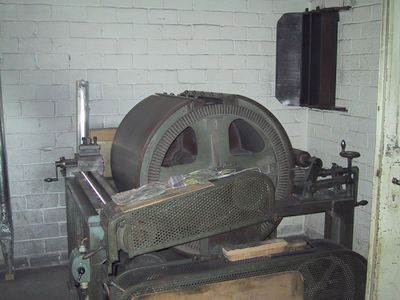 After the metal is cast on the stone slab, it needs to be rolled and milled to the
appropriate thickness. This drum machine is used to that effect.
The sheet that was poured on the slab is attached to the drum, where it is
subsequently rolled and milled to the right thickness.
After the metal is cast on the stone slab, it needs to be rolled and milled to the
appropriate thickness. This drum machine is used to that effect.
The sheet that was poured on the slab is attached to the drum, where it is
subsequently rolled and milled to the right thickness.
An image of this machine, under better lighting conditions, can also be found on the organ builder's website
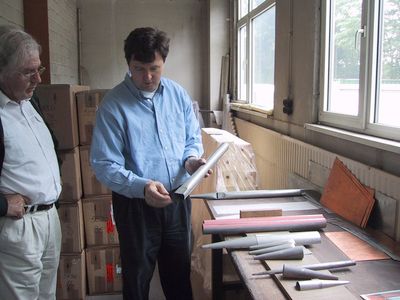 Cones and cylinders are then formed from the sheet metal, and soldered together
into the basic pipe shapes.
Cones and cylinders are then formed from the sheet metal, and soldered together
into the basic pipe shapes.
One of the reasons tin is used for organ making is that it is very soft, so its relatively easy to work with. It also has a low melting temperature, allowing it to be soldered.
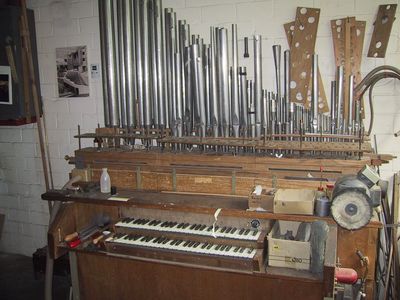 This voicing organ was the neatest thing of the whole tour.
This voicing organ was the neatest thing of the whole tour.
Its basically a little organ in the workshop, with a random assortment of pipes plugged into it.
It is used for doing the initial voicing and tuning of the new pipes. I'm guessing its useful to see how the pipe sounds compared to other pipes, if so desired.
Seeing such a seemingly disorganized assortments of pipes plugged into the organ was just so novel. Very different from the image of perfection that a finished organ projects.
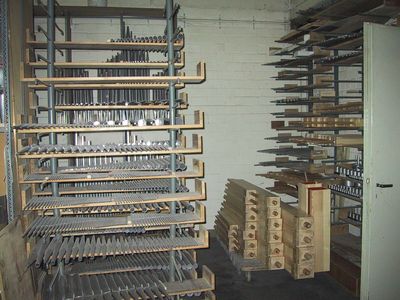 Large organs have on the order of 50 or more registers. Each register consists
of a pipe for each key on one of the keyboards. So that's a LOT of pipes to go into an organ.
Hence pipes stacked in assorted piles seemingly everywhere.
Large organs have on the order of 50 or more registers. Each register consists
of a pipe for each key on one of the keyboards. So that's a LOT of pipes to go into an organ.
Hence pipes stacked in assorted piles seemingly everywhere.
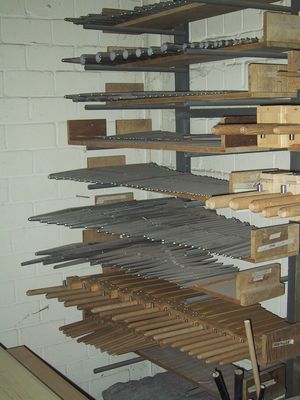 And even more pipes. Some wooden pipe registers on these shelves as well.
And even more pipes. Some wooden pipe registers on these shelves as well.
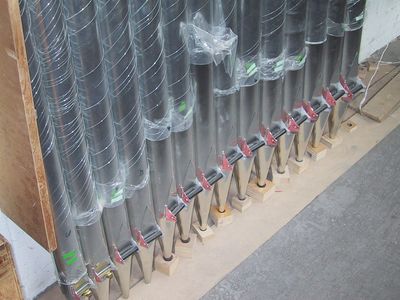 These pipes are for one of the registers that is visible at the front of the
organ. Only a fraction of an organ's pipes is actually mounted on the front
to see. These ones, as not to get tarnished from handling, are wrapped in plastic.
These pipes are for one of the registers that is visible at the front of the
organ. Only a fraction of an organ's pipes is actually mounted on the front
to see. These ones, as not to get tarnished from handling, are wrapped in plastic.
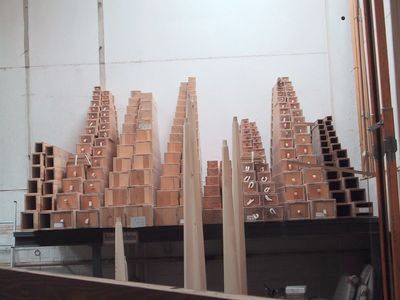 Some stacks of wooden pipes. I guess being square and not as soft as tin, they
stack much better. Some of these are open registers, others are stopped registers.
Some stacks of wooden pipes. I guess being square and not as soft as tin, they
stack much better. Some of these are open registers, others are stopped registers.
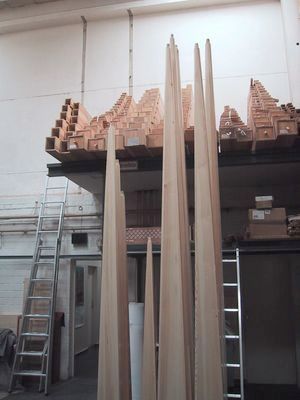 Another interesting shot. The very tall wooden things are the resonator cones
for the very low notes of a reed register. Note the ladders for scale!
Another interesting shot. The very tall wooden things are the resonator cones
for the very low notes of a reed register. Note the ladders for scale!
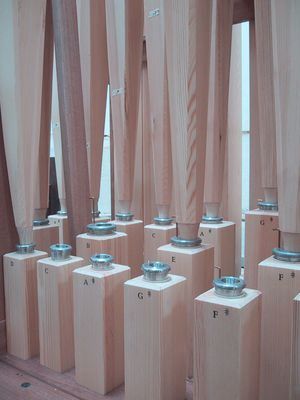 These wooden boxes contain the reed mechanism for a reed stop. The resonator cones
for the lowest notes are the ones in the previous photo, other resonators are
plugged into the reed box.
These wooden boxes contain the reed mechanism for a reed stop. The resonator cones
for the lowest notes are the ones in the previous photo, other resonators are
plugged into the reed box.
Next: Organ case building
